Last updated on 2025-10-13
A review and sample photos using the ELMARIT R 28mm 1st with film and digital cameras.
- Please see the disclaimer regarding advertising here.
- Italicized links in the text are advertisement links that take you to other sites.
Table of contents
Gallery
The following cameras were used to take the sample photos:
- LEICA R8 +lomography lady gray BW 400・SLR film camera
- CANON EOS-1D Mark-IV・Digital SLR camera
- LEICA SL Typ601・Mirrorless camera
- LEICA M Typ240・Digital rangefinder cameras and mirrorless cameras
- SONY α7Sii・Mirrorless camera
- SONY α7・Mirrorless camera
- FUJIFILM X-Pro1 +SPEED BOOSTER R 0.71・Mirrorless camera
- Click on the photo in the gallery to enlarge it.
Review
1.Overview
The ELMARIT R 28mm 1st lens has one of the longest model lives among R-mount lenses, with approximately 50,000 units produced continuously over a 22-year period from 1970 to 1992. While other lenses with long model lives are occasionally discontinued, perhaps because the inventory produced never runs out, this lens has enjoyed such long sales.
This lens was released in 1970, during the era of the LEICA FLEX film camera, and production ended in 1992, the same year the LEICA R7 was released, making it a lens that has existed alongside Leica SLR cameras.
The lens consists of eight elements in eight groups, with all elements independent and with no cemented surfaces. It has eight aperture blades and a minimum focusing distance of 0.3m.
2.Usability
The ELMARIT R 28mm 1st delivers crisp, clear images with excellent resolution all the way to the corners, with virtually no vignetting. This is evident in the example image captured with the HASSELBLAD X2D-100C below, and its performance is more than sufficient for use with the 35mm format.
This is a testament to the lens’s continued success, selling for over 20 years until it was replaced by the newer, later, or Type II lenses.
The lens is packed with eight elements in eight groups in a compact body, giving it a moderate weight, and the design is completed by attaching a Leica 12509 plastic hood to the lens. Without the hood, the lens looks small and tapered, which is not very stylish.
The 35mm equivalent focal lengths for sensors other than 35mm full-frame sensors are as follows.
- APS-H = 28*1.3 = 36mm
- APS-C (CANON) = 28*1.6 = 45mm
- APS-C = 28*1.5 = 42mm
- APS-C + SPEED BOOSTER = 281.50.71 = 30mm
■Film Camera
Looking at the results with the LEICA R8+ monochrome film, the Lomography Lady Gray BW 400 offers excellent gradation in both highlights and shadows, with smooth midranges.
When used with the correct exposure, the lens captures clear results on film.
The results with the digital camera suggest that higher-resolution reversal film will also work well.
■Digital SLR Camera
The Canon EOS 1D Mk-IV can be used without issue with a Canon digital SLR camera via a mount adapter. The 1D Mark-IV has a wide-angle focal length equivalent to 36mm, which is slightly narrower than the original focal length, but can be used as a replacement for a 35mm lens.
The image quality of the 1D Mark-IV, shot with the 16-megapixel 1D Mark-IV, shows no significant degradation.
The repair period for the 1D Mark-IV has expired, and as of 2025, its used market price has dropped significantly. Since its sensor size is roughly the same as the DMR (Digital Module R) used to convert my previous Leica R8 and R9 cameras to digital cameras, I purchased it as a replacement for the DMR.
The EOS 1Ds Mk-III, with its 35mm full-frame sensor, displayed Error 20 (Err20) and was unusable due to the camera mirror interfering with the rear lens element. The CANON EOS 7D is equipped with an APS-C size sensor and the camera mirror is small, so it can be used without any problems.
Some of this information differs from the results of the lenses I own, so please refer to the page I created, “The Last APS-H Flagship Camera: CANON EOS-1D Mark-IV,” for more information.
■ Mirrorless Cameras
Both cameras are equipped with 24-megapixel image sensors, and the lenses take full advantage of this pixel count.
When an R-mount lens without a ROM connector is attached to the LEICA SL Typ601 via the “LEICA L R Lens Adapter 16076,” the lens name can be selected from a list of R-mount lenses registered in the camera and lens information can be registered in the Exif file of captured images.
When an R-mount lens is attached to the LEICA M Typ240 via the “LEICA M R Lens Adapter 14642,” the lens name can be selected from a list of R-mount lenses registered in the camera and lens information can be registered in the Exif file of captured images. This feature utilizes the 6-bit coding capabilities of the digital M-mount. It is believed that only digital M-mount cameras with an EVF can store this R-mount lens information.
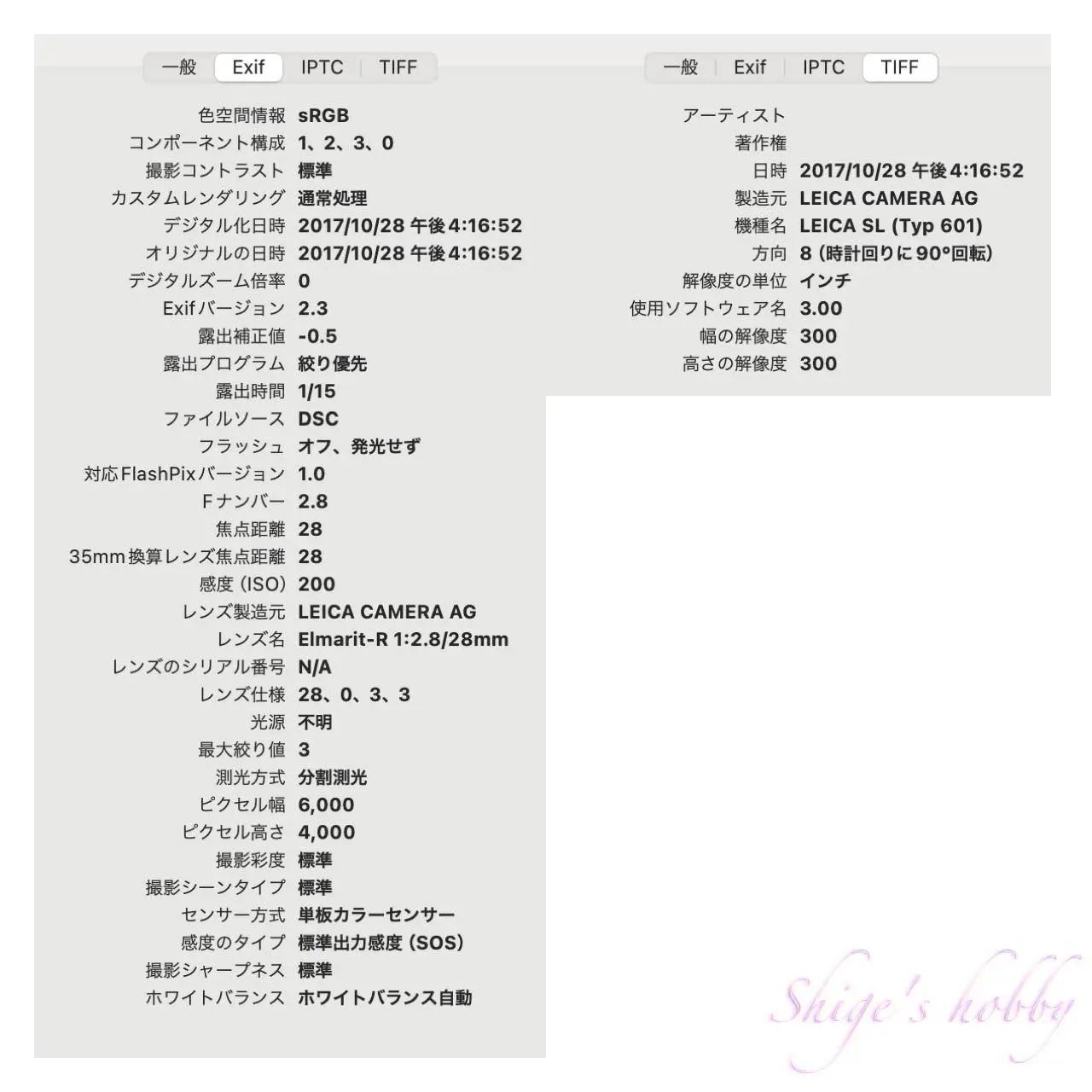
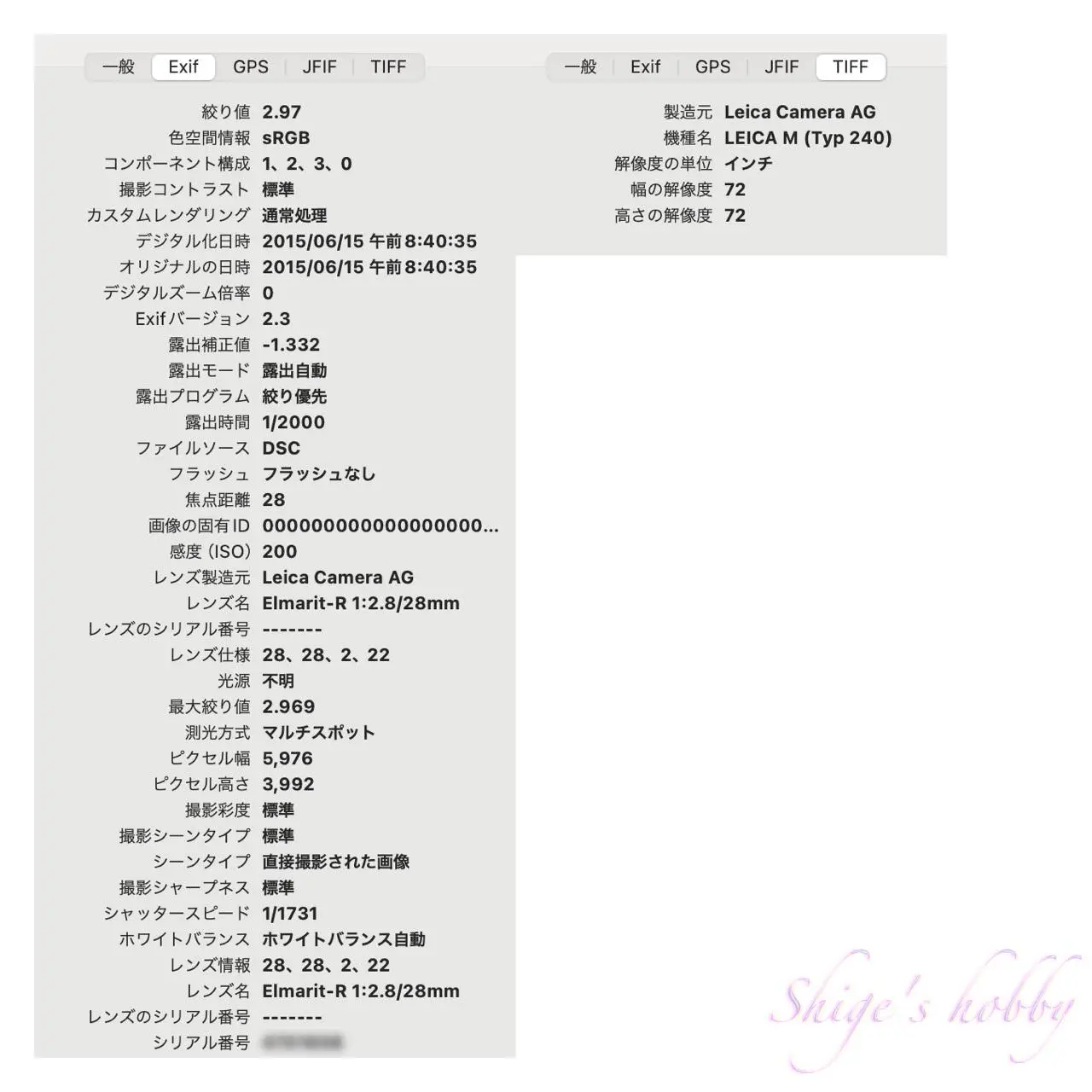
The SONY α7 has 24 megapixels, while the SONY α7Sii has 12 megapixels, and with these pixel counts, image quality is not an issue.
In terms of usability, the EVF’s magnification function allows for accurate focus adjustment, and mirrorless α cameras have included image stabilization since the second generation, making it easier to use R-mount lenses.
Sony cameras do not offer a standard way to register the focal length or name of a manual focus lens in the Exif file, so you must edit the Exif after shooting or use a discontinued app.
The X-Pro1 is a camera equipped with a FUJIFILM APS-C sensor, and the SPEED BOOSTER is a focal reducer that allows you to use a magnifying glass to compensate for information cut off by the sensor size. The advantage is that the aperture value is one stop brighter. While there is no significant degradation in image quality in the center, distortion is amplified at the periphery, resulting in a deterioration in image quality compared to images taken with a 35mm full-frame sensor camera. Using a focal reducer will allow you to obtain a focal length close to that of the original lens, but whether the peripheral depiction is acceptable depends on the photographer, and care must be taken as lenses that have questionable peripheral depiction to begin with will make that poor depiction even more pronounced.
When used with the HASSELBLAD X2D-100C medium-format digital camera, vignetting was observed at the edges, but the image circle is wider than that of the 35mm format, and it is clear that there is plenty of room for it in the 35mm format. In scenes where cutting out the edges does not look unnatural, it is perfectly usable without cropping.
The photo below shows the results of a photo taken with the HASSELBLAD X2D-100C, using the sensor shutter (electronic shutter).


I have purchased this lens twice, and again in 2023, and have used it with my DSLR, mirrorless camera, and LEICA R8, loading film into it.
3.Summary
In conclusion, to sum up the ELMARIT R 28mm 1st is a wide-angle lens from the film era. When shooting with a digital camera, the resolution and flatness are inferior to modern lenses, but if you enjoy that as a way of depicting something, then this is a good lens to have.
The 1-type Elmarit-R 28mm was produced over a period of 20 years, and although the design details have changed over the years, the basics of the lens have not changed. If you have any doubts about the image, we recommend having it overhauled as there is a possibility that the lens is cloudy or deteriorating.
Specifications, considerations, etc.
The ELMARIT R 28mm 1st has eight aperture blades, a slightly more generous number than the standard Elmarit series, which has six. This is likely because the Leica R-mount did not include the Summicron or Summilux, which have a higher-end focal length of 28mm.
The only other 28mm Leica R-mount lens, other than the Elmarit 28mm, is the PC-Super-Angulon 28mm, which features a special “Perspective Control” function.
When inserted into the Leica 12509 plastic hood, threadless drop-in Series 7 filters can be used, and 48mm diameter filters can also be screwed into the front of the lens. Screw-on 48mm filters are Leica’s proprietary filter diameter, making them rare, and even used ones in poor condition fetch high prices.
Regarding the Leica R-mount-specific lens CAM, I’ve confirmed that this lens has been officially released in 1-CAM, 2-CAM, 3-CAM, and R-Only-CAM versions.
As far as I know, there are no officially released lenses with ROM connectors. However, I previously thought that R-Only-CAM versions hadn’t been released, but I once acquired a 1987 Elmarit and it was an R-Only-CAM, so it’s possible that official versions with ROM connectors were also released. In any case, ELMARIT R 28mm 1st generation lenses with ROM connectors are rare, and when they appear on the used market, they tend to be more expensive than lenses without ROM.
The standard black lens was produced in large quantities—50,000 units in total—so several can always be found on the used market, making it a relatively readily available lens, even in the 2020s. Lenses can also sometimes be found modified for the Nikon F mount. The olive-colored version sold with the special Leica R3 Safari is rare and fetches a much higher price than the standard black lens barrel.
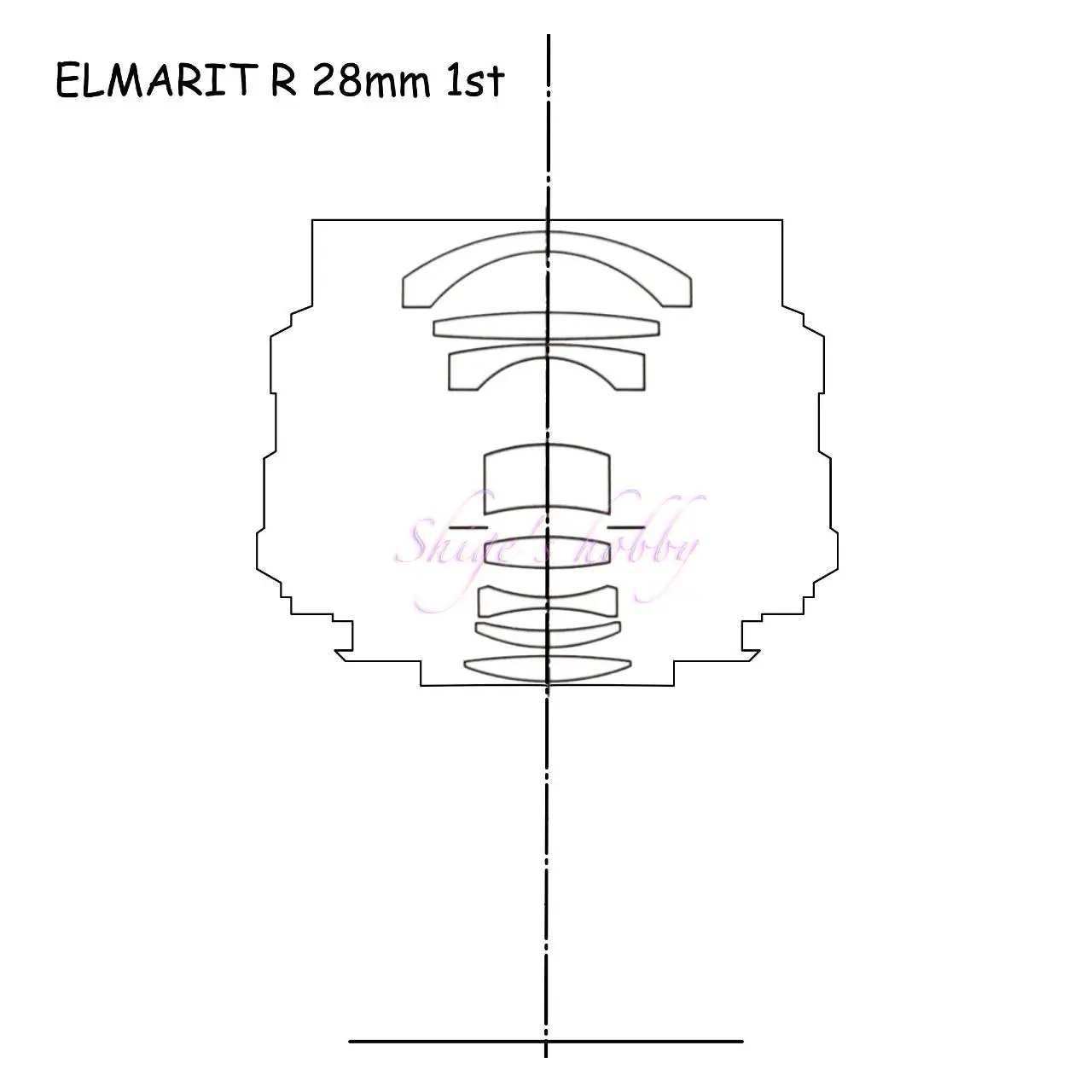
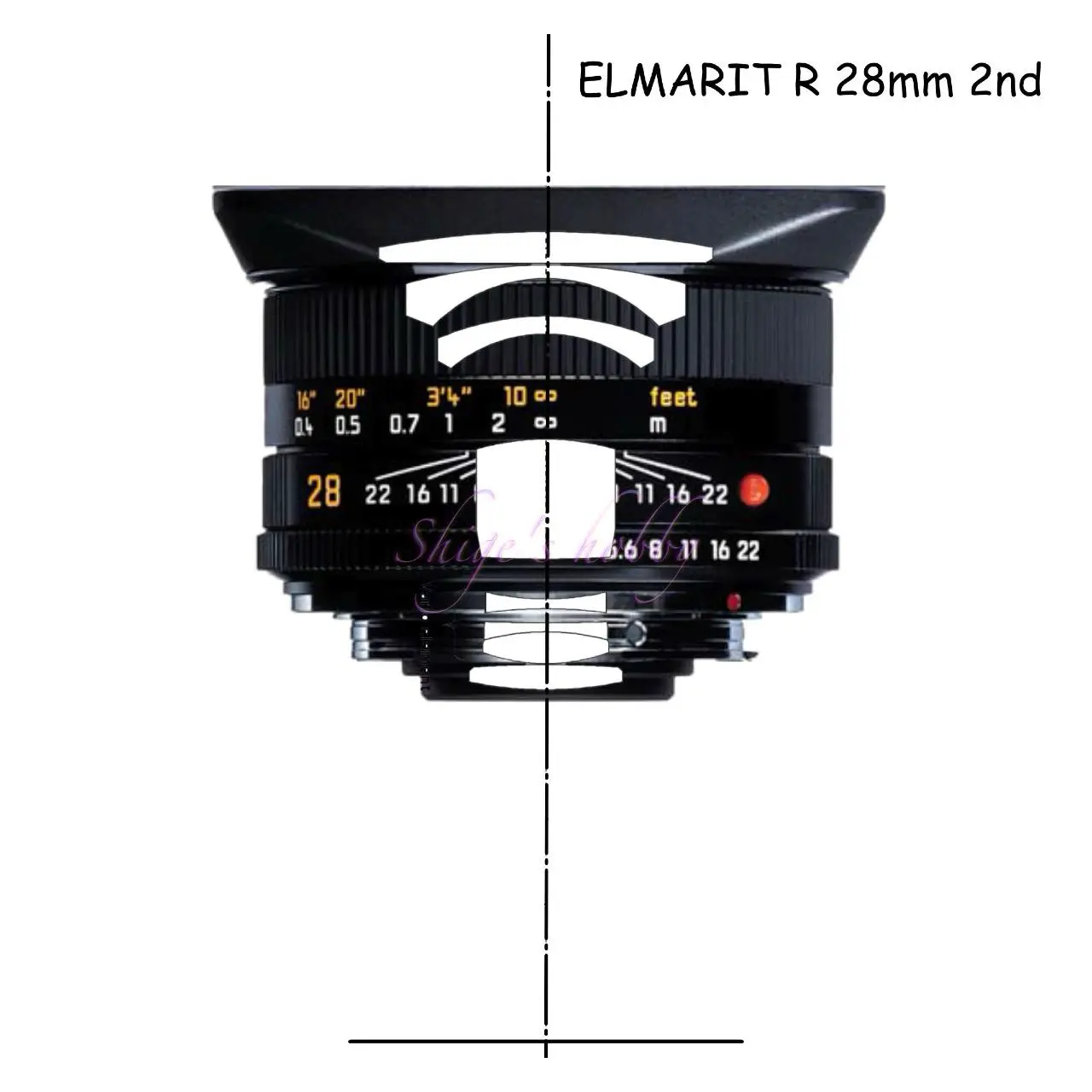
| Items | I型 | II型 |
| Focal length(mm) | 28 | 28 |
| Max aperture | 2.8 | 2.8 |
| Min aperture | 22 | 22 |
| Leaf blade | 8 | 6 |
| Lens Construction | 8 elements in 8 groups | 8 elements in 7 groups |
| Min distance(m) | 0.3 | 0.3 |
| Lens length(mm) | 40 | 48 |
| Max diameter(mm) | 63 | 67.5 |
| Filter Size(mm) | Series 7,48 mm | 55 |
| Hood | 12509 | Build in |
| Weight(g) | 390 | 435 |
| Release date | 1970 | 1993 |
Reference links
- All about R-type Leica / Author: Shinichi Nakamura / edited by Asahi Sonorama Ads by Amazon
- Canon Leica-R Compatibility Database
- Elmarit 28mm F2.8 Leica wiki
- ELMARIT R 28mm 2nd・Shige’s hobby
Affiliate links
- Leica R lens・Ads by ebay
- Leica M lens・Ads by ebay
- Leica TL・Ads by ebay
- Leica SL・Ads by ebay

Update history
- 2025.9.19
- 2025.7.1
- 2025.5.31
- 2025.1.3
- 2024.03.09:Update article
- 2023.11.20:First draft

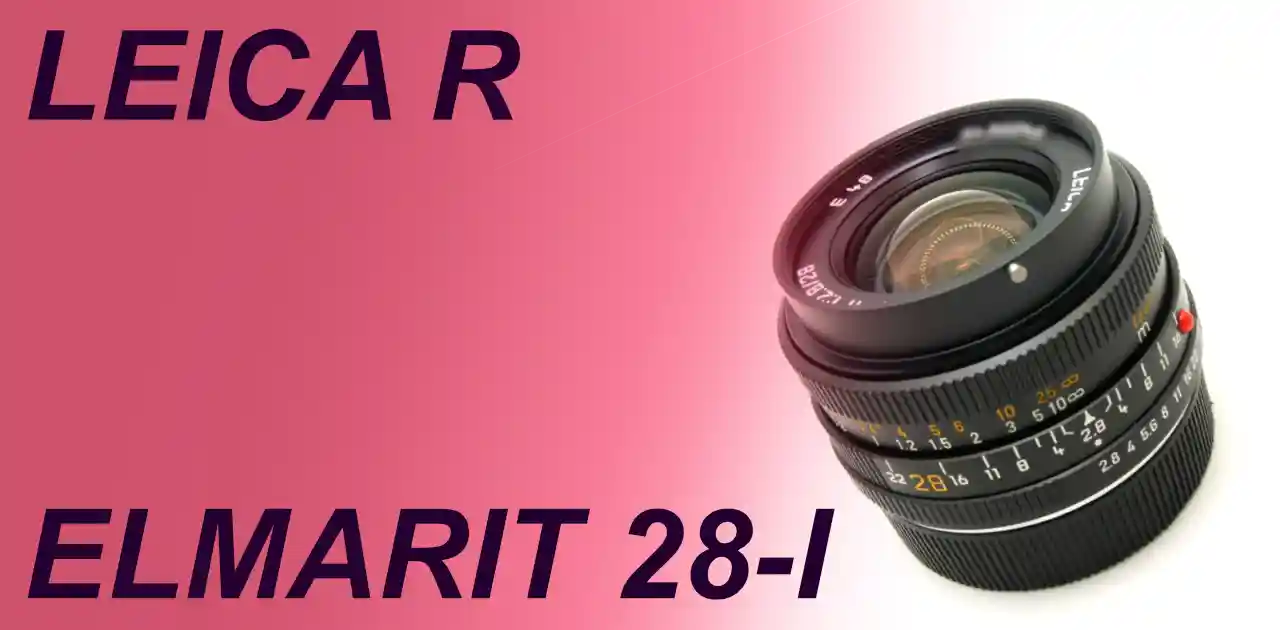

Be First to Comment